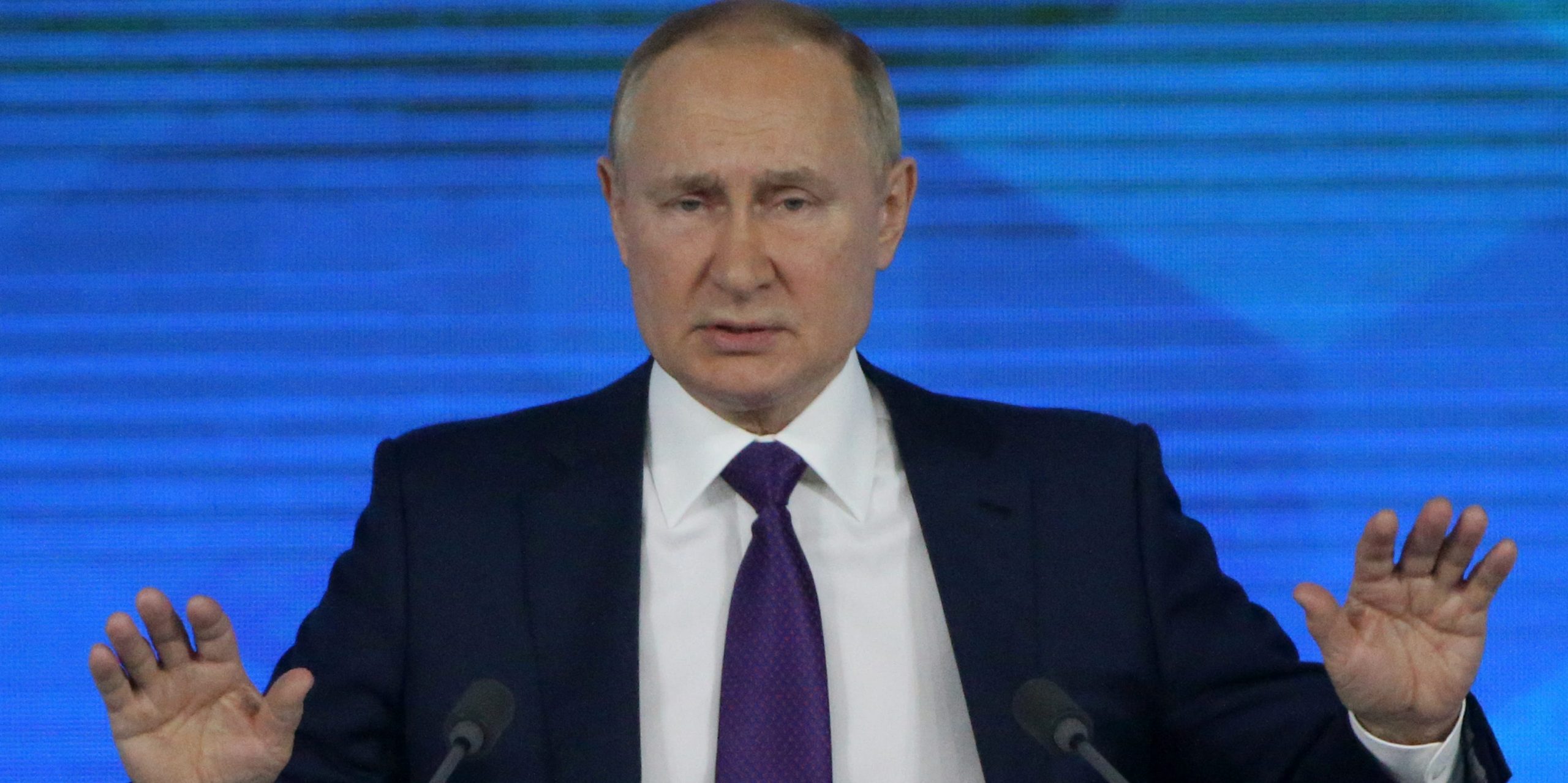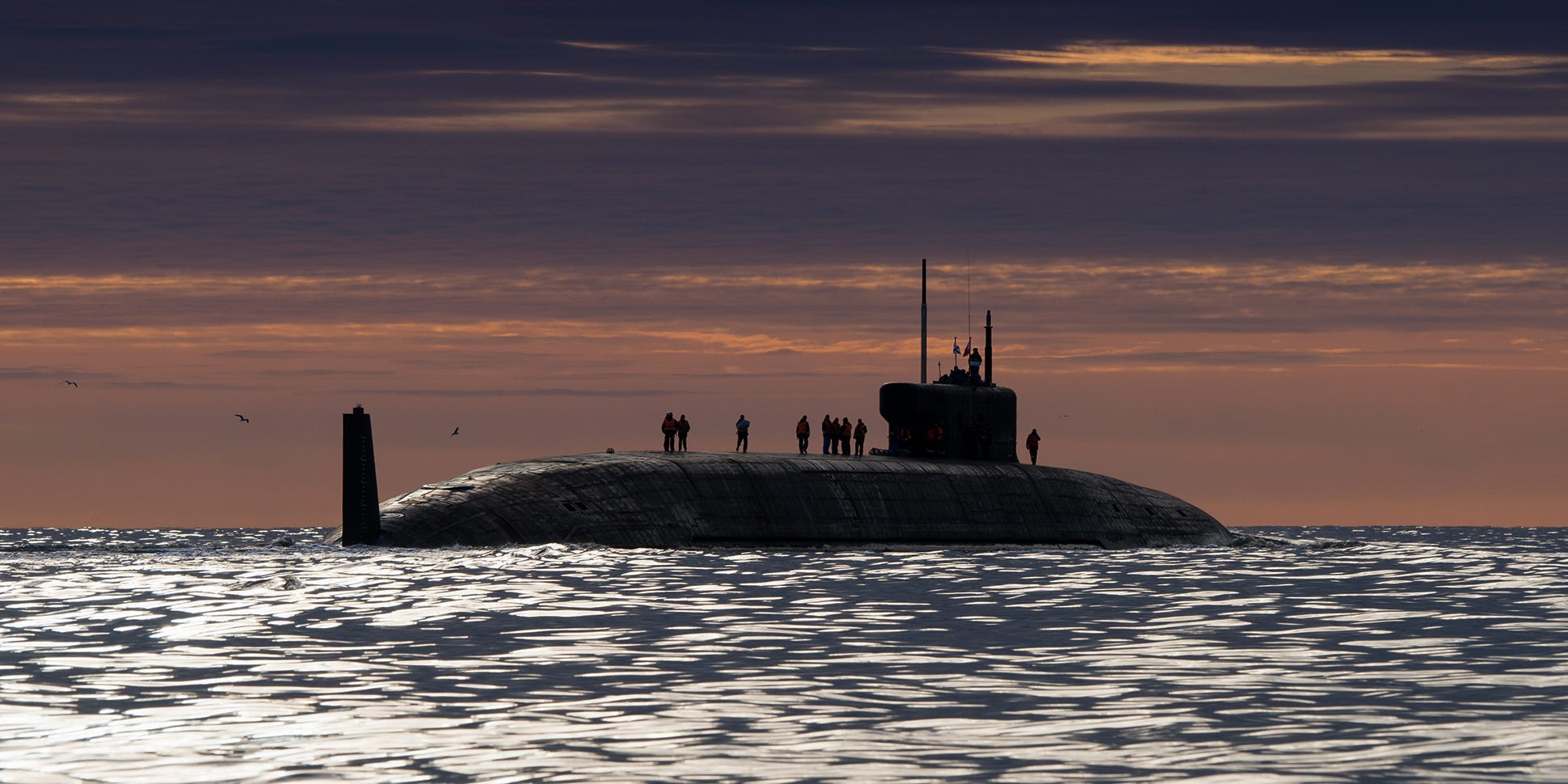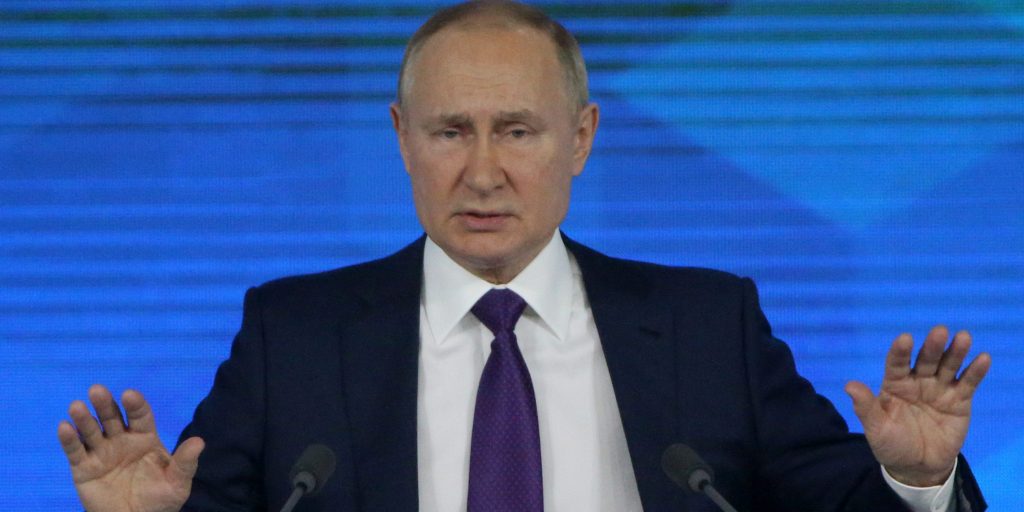
- Putin has leveled nuclear threats including that he'd shift his nuclear forces to a heightened alert state.
- Experts view Russia's nuclear saber rattling as a blaring warning for NATO to stay out of Russia's war in Ukraine.
- But concerns remain that Russia may try to strengthen its stalling Ukraine war with tactical nuclear weapons.
A few days after ordering the invasion of Ukraine, President Vladimir Putin shifted his country's nuclear forces to a state of alert he called "special combat readiness," stirring fears of nuclear war.
Russia's nuclear saber rattling, while alarming, is at this point most likely a blaring signal for NATO not to get involved in Russia and Ukraine's conflict, experts said. But concerns are rising of the still slim possibility that Russia may try to strengthen its stalling offensive with a tactical nuke. This is a subject of pressing debate among experts Insider interviewed.
"We certainly should be worried about [Putin's] saber rattling – that is irresponsible and reckless," said Hans Kristensen, director of the Nuclear Information Project at the Federation of American Scientists.
"Whether we should be worried about whether he will actually use them, I think it's another question," he continued, "because there are no indications that I've heard of that he has taken any steps, unique steps to ready the forces to do such a thing."
If Russia were to use nuclear weapons, it's likely they would use tactical weapons, also known as battlefield nukes, which are designed to be used on a smaller scale – on the battlefield or for a limited strike. These Russian warheads can be fitted to cruise missiles, torpedoes or bombs to obliterate a bunker, naval base or air defenses. While powerful, their blasts are typically smaller by a factor of 60 or more from Russia's inter-continental ballistic missiles, some of which carry multiple thermonuclear warheads.
While both the United States and Russia have decreased their tactical nuclear arsenal since the Cold War, Russia has around 2,000 tactical nukes — far and away the world's largest low-yield arsenal — while the US has about two hundred. This disparity could encourage Russia to take greater nuclear risks against a non-NATO enemy like Ukraine, as well as make Moscow more likely to undermine NATO's nuclear credibility, according to an analysis by the Heritage Foundation.
Kristensen said Putin's move could be a sort of "bravado type of chest thumping," but, more than that, it's "a very pointed message to NATO not to get involved."
Joshua Pollack, Senior Research Associate at Middlebury and nuclear proliferation expert, echoed Kristensen in a March 1 interview.
"Every time Putin has talked about nuclear weapons in the last week, it has been with a view to warning NATO," he said. "It has not been with any reference to Ukraine. So as long as NATO stays out of the fight, I think that it's less of a concern," he said of tactical nuclear warfare.
The consequences of nuclear combat are so extreme, with deaths measured in the hundreds of thousands if not millions, that some argue the West can't assume Putin is not bluffing, a view that is shaping the Biden administration's response. And as Putin's offensive struggles and NATO reiterates it will not defend Ukraine, some experts warn that an increasingly desperate Putin may have reasons to turn to a battlefield nuke.

If Russia were to use tactical nukes, the results would almost certainly be catastrophic, with researchers at Princeton University estimating more than 91 million people in Russia, the US, and NATO-allied countries could be killed within three hours. The researchers, from Princeton's Science and Global Security lab, created a simulation that shows one tactical "nuclear warning shot" from Russia could quickly devolve into full-blown nuclear war.
"This project is motivated by the need to highlight the potentially catastrophic consequences of current US and Russian nuclear war plans. The risk of nuclear war has increased dramatically in the past two years," the project states on its website.
President Joe Biden has made it clear that the US has no interest in provoking Russia, and is trying to walk a fine line of hammering Russian with economic sanctions and continuing to arm Ukraine's military without being viewed by Russia as a combatant.
"Provocative rhetoric like this regarding nuclear weapons is dangerous, adds to the risk of miscalculation, should be avoided and we'll not indulge in it," Press Secretary Jen Psaki told reporters in late February.
Although most experts agree that the chances of nuclear war are extremely low, some are concerned that Putin would use a tactical nuke if he were to become desperate enough.
Retired Brig. Gen. Kevin Ryan, a former defense attaché to Russia and senior fellow at Harvard's Belfer Center for Science and International Affairs, is worried that Putin, in his desperation, could use a "small nuclear weapon" to keep the US and NATO out of the conflict.
"It's not a good thing and it's not something I think everybody wants to jump to – including Putin," Ryan said. "But this is everything for him now," he said of the war with Ukraine. "If he doesn't accomplish this, his own people will take him out."
Jonathan Katz, a senior fellow at the German Marshall Fund, said that Putin's nuclear threats should be taken "quite seriously."
"The difference between this conflict and Chechnya, Syria, and other attacks in the past is that NATO and the United States are standing right now on the other side of the border, directly arming and supporting Ukraine and Ukrainians to defend their country," Katz said.
"Putin is calculating right now, if this spills over into something more significant he may decide to use whatever weapon is at his disposal," Katz continued. "If he feels that this is going beyond Ukraine into these other spaces, including with NATO and the United States, I think all bets are off the table."
